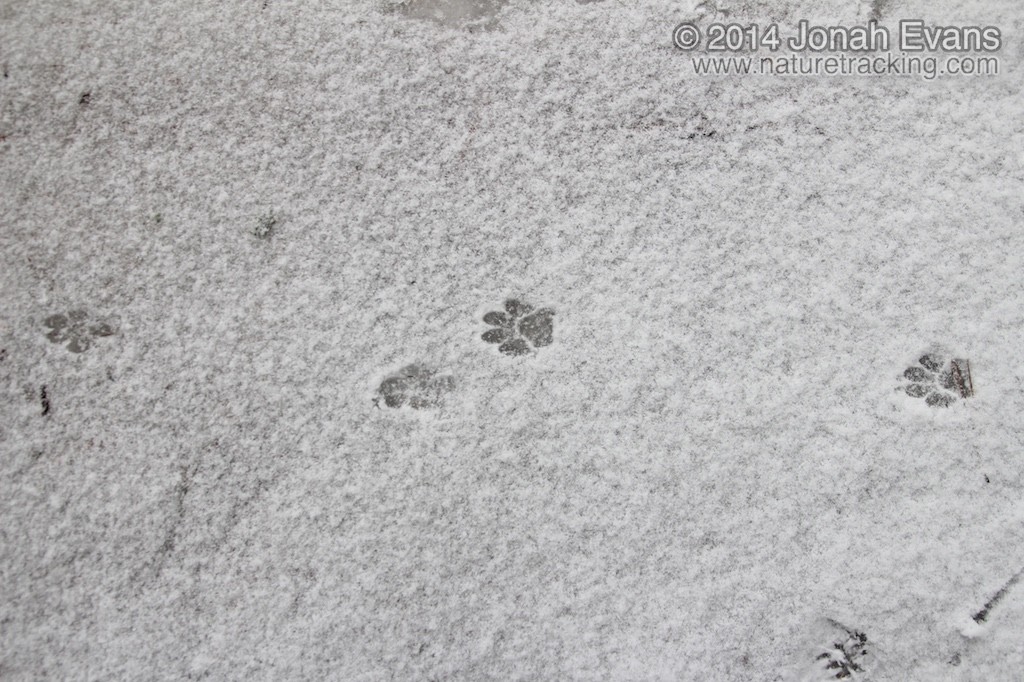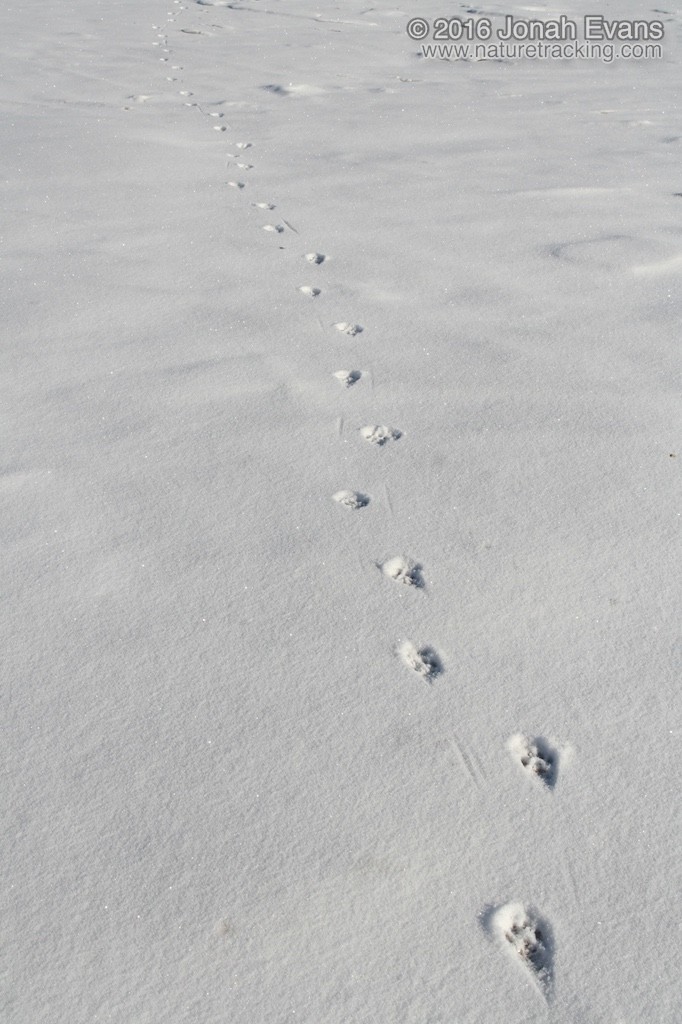Identifying Animal Tracks in Snow – 5 Common Backyard Species
While tracking in the snow can be fantastically easy, it can also be deceptively tricky. Everything you know about tracks gets upended when the tracks are hidden at the bottom of deep leg holes in deep snow. Additionally, tracks can become distorted and expand dramatically as snow melts. In deep, melted snow I’ve actually seen people mistake squirrel tracks for those of a bear!
While trackers usually depend upon the details in each track (like the number and shape of the toes or the presence of claws) to make identifications, in snow it is often necessary to look for other clues. Gait patterns are one of the best tools to ID tracks in the snow and some species are easily recognized from a distance simply by the pattern of tracks. Researchers have even conducted wildlife surveys in snow by identifying the tracks of larger animals from small airplanes!
The best way to get started with tracking in the snow is to first learn the most common species you’re likely to encounter. Here are 5 that seem to be in everyone’s backyard. If you’re interested in seeing tracks of more species, you can check out my iPhone and Android tracking apps here.
Rabbits
Rabbit tracks are one of the most commonly seen after a snow. Look for the repeating bound patterns. Each group of 4 tracks tends to form a tall, thin rectangle. Squirrel bound patterns tend to be much more blocky. Rabbits also have small round toes and fur covered feet while squirrels have long fingers.
Squirrels
Squirrels have a wide and blocky bounding pattern when compared to rabbits. If tracks are clear you may see the long skinny toes. Follow their tracks and they will eventually lead to a tree or other structure for them to climb.

Red squirrel tracks in snow. The 5-toes hind feet are to the outsides and the 4-toed front feet are on the inside.
House cat
House cats are everywhere. I’ve seen their tracks in places surprisingly far from people. They have 4 toes on their front and hind feet and tend to direct register walk (hind feet landing in the front tracks) when walking in snow.
Domestic Dog
Dog tracks are often misidentified as mountain lions. Look for 4-toes on each foot, claws that usually (but not always) show, and a triangular shaped heel pad. Dog heel pads tend to be fairly small (about the size of 3 of their toes) while cat heel pads tend to be larger (about the size of 4 toes).

A dog galloping in snow. Note that the claws don’t always show in dog tracks. Tracks from right to left are: LF, RF, LH, RH.
Deer
Deer tracks are usually easy to identify. However, their hind feet tend to step on top of their front tracks leaving distorted and confusing marks. In deep snow even deer tracks can be tough to identify.
Hopefully this gets you started. Other common backyard species include gray fox, red fox, raccoon, opossum, and mice. Enjoy the snow!
25 Comments
Leave a Reply
You must be logged in to post a comment.



















[…] Following and identifying animal tracks in the snow can be a fun and educational activity for both adults and children. We recommend visiting http://www.naturetracking.com, which features galleries of common animal tracks and an article on tracks commonly seen in the snow. […]
[…] veggie garden area so you can take necessary steps now to nip those potential looming issues. Go to this site to see the 5 most common animal tracks in snow. • Remember to treat for ticks where you think you […]
[…] you would like to identify who made the tracks, this article has some good […]
hi i have picture of strange paw marks, can you please identify it ?
Sure. I’ll send you an email.
Excellent website. Thank you for publishing this info. It really helps demystify tracks in the snow.
[…] spoor in the snow can be read about in this very thorough guide, as well as the article found here, including detailed photographs of the bound patters of various squirrels. Such very enticing […]
What about skunk tracks in the snow or a hedgehog?
For sure! I just had chose the most common ones for simplicity here. Check the mammal tracks page for more species!
[…] so before mistaking a bunny for a bear, pay close attention to the positioning of the prints. Patterns can help you differentiate among […]
Jonah, I have some crazy tracks on my deck this morning–can you take a look at them and potentially identify them?
Sure! Email them to me at [email protected]
I just seen some weird footprints but don’t know how to identify them could you help please was in snow in my back yard.
Hi,
I have some strange footprints in my backyard, there are other recognizable footprints other places in my yard but these I have never seen before. Can I send them?
Sure! Send them to my email at [email protected]
Whoever did this screwed up the rabbit track pics. The rabbit is not coming towards the camera and the rabbit is not hopping to the right. Dont know maybe the pics got inverted before posting, but unless the rabbits are hopping backwards???
Upp yep, oka I get it rabbits back feet go ahead of front. U are correct my apologies
Hello I have seen a track in my front yard and definitely have a picture could you please I identify it for me bcuase imma little worried. Thanks
Feel free to send it. [email protected]
[…] This critter is one of the types making those footprints that you see in the snow when you are going up the lifts on chairs 1 & 4 because you get close enough to the ground to see them there. It is kind of amazing how far they can jump, even in deep snow. Do you wonder what bunny tracks look like in the snow? Check them out here. […]
[…] Squirrel tracks have five longer toes at the rear and four toes on the shorter front paws. As squirrels bound, their rear paws come up alongside their front paws. […]
Something attacked and wounded one of my chickens on the back of her neck. I was hoping the footprints would give me a clue, but you don’t have raccoon or possum.
Thanks for your comment. I had to be very selective for this article. There are lots of photos of both of these species on the mammal page here: https://naturetracking.com/mammal-tracks/
[…] This critter is one of the types making those footprints that you see in the snow when you are going up the lifts on chairs 1 & 4 because you get close enough to the ground to see them there. It is kind of amazing how far they can jump, even in deep snow. Do you wonder what bunny tracks look like in the snow? Check them out here. […]
[…] here to learn more about animal tracking in your […]